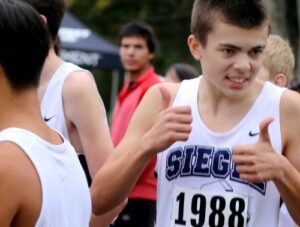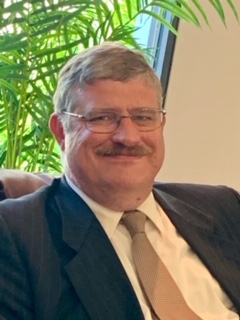by Pamela Urfer (commentary by Kimberly Gerry-Tucker after)
Not much was known about Autism in 1942, the year I was born. Nor in 1952, when I was 10. Nor in 1962, when I was 20. I’m not sure what symptoms I displayed as a child, whether or not I spoke late, or potty trained late, or disliked being touched, but as I don’t like being touched still today I imagine so. All I remember is that my mother was constantly annoyed with me for ‘antisocial’ behavior.
I can’t deny that social cues totally escaped me. I was always saying or doing the wrong thing, expressing an opinion I should have kept to myself, or running around flapping my hands – in general, being a complete dork. At least, that was my mother’s opinion…
My first coping mechanism was reading. I learned early and from then on, in my mother’s words, ‘my nose was always in a book.’ This had the advantage of cutting down on sensory overload, but my primary object was to use books to understand how ‘normal’ people behave. Unfortunately, people in books don’t act ‘normal.’ They act ideally, heroically, dramatically. So that’s what I tried to emulate, with less than ideal results. It did lead to an involvement in theater which has lasted all my life.
I graduated from Berkeley in 1965, and married soon after. My husband was an engineer, as my father had been. Our first daughter was born in 1968. She was autistic (but neither of the two children that followed.) I didn’t have a word for it then and had no idea why she wasn’t following the development patterns laid out by Dr. Spock. She didn’t like to be hugged or rocked, spoke late, read early, and sometimes acted out with violence, episodes she didn’t remember afterwards.
In 1976, when Karen was 8, Barry Neil Kaufman’s book Son Rise came out, but although I recognized similarities, it didn’t really address my situation. Karen grew up, went to Berkeley, and became a Structural Engineer like her father. In 1993, Oliver Sacks’ article on Temple Grandin came out in the New Yorker. Finally, things began to make sense! I sent a copy to Karen and, in 1999, when her first child was born autistic (but neither of the two that followed) we at last had a name to put to his condition. He was the son, grandson and great-grandson of engineers. He’s 19 now and still trying to come to grips with his gifts.
Like Temple Grandin, I would not want to be any different than I have turned out to be. This is who I am. I’m an artist and a writer, happily married with three children and five grandchildren. Still, it hasn’t been easy. I would say that the heaviest burden has been the way in which people react towards me. I make them nervous, even frightened. They are suspicious of my motives and often my words and actions confuse them. One woman said, after reading my book of short stories, “You have a very strange mind.”
Over the years I’ve developed certain coping mechanisms. I find if I’m the one initiating touching, it is not so scary. As an adult, I can make the decision how much contact I can endure, even though I sometimes miscalculate and have to run from a crowded house on Thanksgiving, hands flapping, as I did two years ago. I’ve learned to shrug when I’m excluded from events even though the rejection hurts. I’m an introvert, so I can thrive without much society. Even my hearing loss at 65 has relieved me of sound overload. Quite a gift!
And yet, there are people who love me, and even like me, the way I am. I credit my loving husband, Don, for admiring what I do, building me my own room, and making it possible to get along in this strange world.
Pam shares her photography:




***
The More You Look, The More You See
By Kimberly Gerry-Tucker
I’m a visual person. I learn best though visual means, like using screenshares or tutorials. I express and destress in visual ways too– through art. Shiny things get my attention. One of the perks of working with Art of Autism, is I receive PODS (People of Diversity, Speaking) submissions at: podsartofautism@gmail.com. These treasures in my inbox are like opening gifts I didn’t know I wanted. The PODS Project is not a collection of epic narratives into the lives of autistic people (my tribe).
On the contrary, PODS is a patchwork of glimpses: short, shiny vignettes. PODS posts consist of two things: a paragraph and an accompanying photo. But grouped together visually on the Art of Autism page, it’s quietly impactful. PODS becomes something bigger than its individual parts. It becomes a ‘we’ instead of a ‘me,’ if that makes sense! The word autistic means ‘self’ but PODS is a mosaic of both commonality and neurodiversity. Autistics have a lot of attributes in common, but each of us is a singular glimmering facet of something bigger than ourselves- the autism community. Together, our individual shines cast a spotlight. When I received Pam Urfer’s PODS submission, her engaging photography drew me in. The more you look, the more you see, and that could seriously be the mantra for my own personal way of life. As an autistic woman in my 50s, I relate to Pam Urfer, so I urged her to expand on her point of view in blog form. I am sure her experience is a common one, it’s just not that widely spoken about, is it? So… above is Pam’s essay.
– Kimberly Gerry Tucker, author of Under The Banana Moon, blogger at WordPress, and proudly: Vice President on Board of Directors at Art Of Autism









Kimberly,
Thank you so much for inviting me to join this group. I’m honored.
My pleasure Pam! I look forward to seeing more of your work and reading more articles from you.
What factors do I need to be allowed to join the group?
Hi,
Glad to hear of your interest in The Art of Autism. I’m going to forward your request to admin, Kimberley Tucker. If you don’t hear from her in a couple of days, write me again.
Hello! You are welcome to send me an email at
Podsartofautism@gmail.com
We’d love to hear from you.
Kim